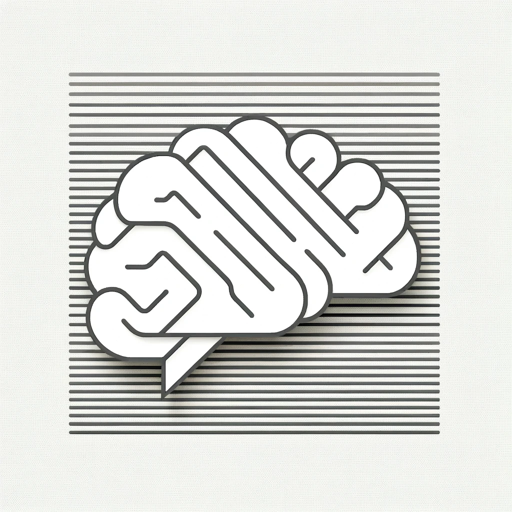NeRF Excavator-AI-driven NeRF research exploration tool.
AI-powered tool for NeRF research assistance.
Summarize a key NeRF paper from ICCV.
Is there existing research on this NeRF idea?
Explain Gaussian Splatting in NeRF.
List influential NeRF papers from CVPR.
Related Tools
Load More
Climate Giga Generator 2.0
Carbon Negative by 2030

SLAM Nerd
Your expert in SLAM and computer vision.

Scene Creator
I break down sales letters into scenes, ensuring verbatim text in each.

SandNet-AI VoX
Create voxel art references. Assets, scenes, weapons, general design. Type 'Create + text'. English, Portuguese, Philipines,..., +60 others.

Nuke Wizard
Expert in VFX compositing and Nuke software, offering theory and practical advice.
场景构造师
20.0 / 5 (200 votes)
Introduction to NeRF Excavator
NeRF Excavator is a specialized tool designed to facilitate exploration and research in Neural Radiance Fields (NeRFs). It serves as a highly customizable and interactive assistant for users who are looking to delve deeply into NeRF technologies, providing detailed summaries, pseudo-code examples, and real-time academic references. The primary goal is to bridge the gap between complex NeRF research and practical applications by making cutting-edge papers, algorithms, and code repositories more accessible. For instance, NeRF Excavator can summarize a research paper on dynamic scene rendering with NeRFs, provide insights into the paper's methodologies, and even link users to relevant GitHub implementations. The system operates at multiple levels of technical complexity, making it ideal for both researchers familiar with NeRF technologies and newcomers trying to grasp the fundamentals.

Core Functions of NeRF Excavator
Research Paper Summarization
Example
Summarizing a recent NeRF paper from arXiv on multi-scale NeRFs, providing key takeaways such as the authors' approach to handling large-scale scene representations.
Scenario
A researcher who is new to NeRFs needs to quickly grasp the contributions of a new paper in the field without reading through every detail. NeRF Excavator summarizes the key methodologies, results, and potential applications in an easily digestible format.
Providing Pseudo-code
Example
Translating complex NeRF algorithms into easy-to-understand pseudo-code, such as the volumetric rendering formula used in NeRFs for reconstructing 3D scenes.
Scenario
A developer working on a 3D scene reconstruction project requires an intuitive understanding of how NeRFs compute volumetric representations. NeRF Excavator provides pseudo-code that simplifies the mathematical operations and aids in implementation.
Real-time Academic Citations and References
Example
Directly linking to Google Scholar pages, author profiles, or GitHub repositories related to a NeRF paper or research project.
Scenario
An academic preparing for a NeRF-focused lecture requires authoritative sources to back up their content. NeRF Excavator retrieves real-time citations, ensuring the academic can reference up-to-date papers and corresponding datasets or code.
Target Users of NeRF Excavator
Researchers in Neural Radiance Fields
These users are typically Ph.D. candidates, postdoctoral researchers, or seasoned academics who are working on or exploring topics related to NeRFs. They benefit from NeRF Excavator's ability to provide in-depth paper summaries, real-time citations, and connections to relevant codebases or datasets. By streamlining their research process, NeRF Excavator allows them to focus on higher-level problem-solving rather than spending excessive time gathering resources.
Developers and Engineers in 3D Graphics and Computer Vision
These users are often professionals building applications or conducting experiments in 3D rendering, autonomous systems, or virtual reality. They benefit from the pseudo-code generation and algorithm explanations provided by NeRF Excavator, enabling them to implement NeRF techniques in their projects without needing deep academic expertise in the subject matter. NeRF Excavator makes it easier for them to translate research into practical solutions.

Detailed Guidelines for Using NeRF Excavator
1
Visit aichatonline.org for a free trial without login, no need for ChatGPT Plus.
2
Familiarize yourself with the tool's primary focus: aiding users in exploring Neural Radiance Fields (NeRF) research. This involves summarizing research papers, generating pseudo-code, and providing real-time information from online sources like Google Scholar.
3
Search or ask detailed questions about NeRF topics, such as specific research papers, implementations, or technical details related to NeRF applications. You can get summaries of complex papers or ask for coding assistance.
4
Optimize your queries by including clear objectives. For example, ask for summaries, explanations, or implementations based on recent NeRF papers. The tool can also assist with locating code repositories or relevant Google Scholar profiles.
5
Use follow-up questions to dive deeper into results. NeRF Excavator is designed to support iterative research, allowing users to refine and expand their search for more precise and enriched data.
Try other advanced and practical GPTs
Intermittent Fasting GPT
AI-Powered Intermittent Fasting Guidance

Miss English
AI-powered translation for natural results

天官庙的刘半仙
AI-powered interactive role-playing adventure

Disneyfy Yourself
Transform your photo into Disney magic with AI.

ぷらっとmapくん
AI-powered patent data visualization tool

Insta Guru
AI-Powered Instagram Growth

Viral Video Scribe
AI-powered scripts for viral TikToks

Pixel Crafter
AI-Powered Pixel Art from Photos

Android Dev Helper
AI-powered Android Development Guide

Paper Interpreter (Japanese)
AI-powered Japanese paper interpreter

Universal Psychologist (UPC)
AI-driven expertise in human psychology.

Essay GPT
Transform Your Text with AI Precision

- Code Generation
- Real-time Data
- Paper Summarization
- NeRF Research
- Iterative Queries
Common Q&A About NeRF Excavator
What is NeRF Excavator's primary function?
NeRF Excavator helps users explore Neural Radiance Fields research by summarizing papers, generating pseudo-code, and offering real-time data from sources like Google Scholar. It supports both novice and expert users in understanding NeRF technologies.
Can NeRF Excavator provide pseudo-code for research papers?
Yes, NeRF Excavator can generate pseudo-code from NeRF research papers, simplifying complex algorithms and making it easier for developers to implement key techniques.
Does NeRF Excavator support iterative research queries?
Yes, the tool is designed for iterative usage. You can ask follow-up questions to refine and deepen your understanding of a given topic, leading to a richer exploration of NeRF-related research.
Is the tool limited to research paper summaries?
No, NeRF Excavator also provides real-time information on research profiles, code repositories, and can assist in generating implementation strategies and recommendations based on research trends.
Do I need prior knowledge of NeRF to use the tool?
No, while some technical background is beneficial, NeRF Excavator is accessible to users with varying levels of expertise. It provides both simplified explanations and advanced insights depending on the user's needs.